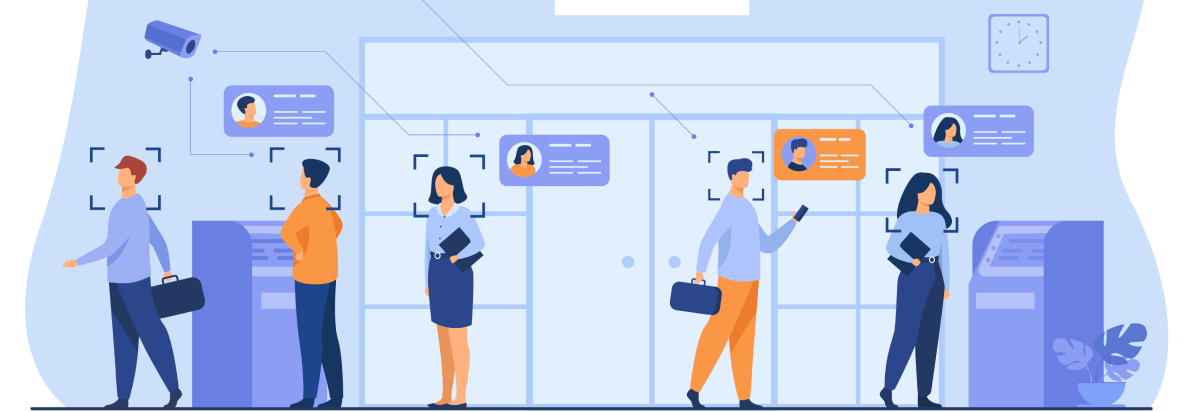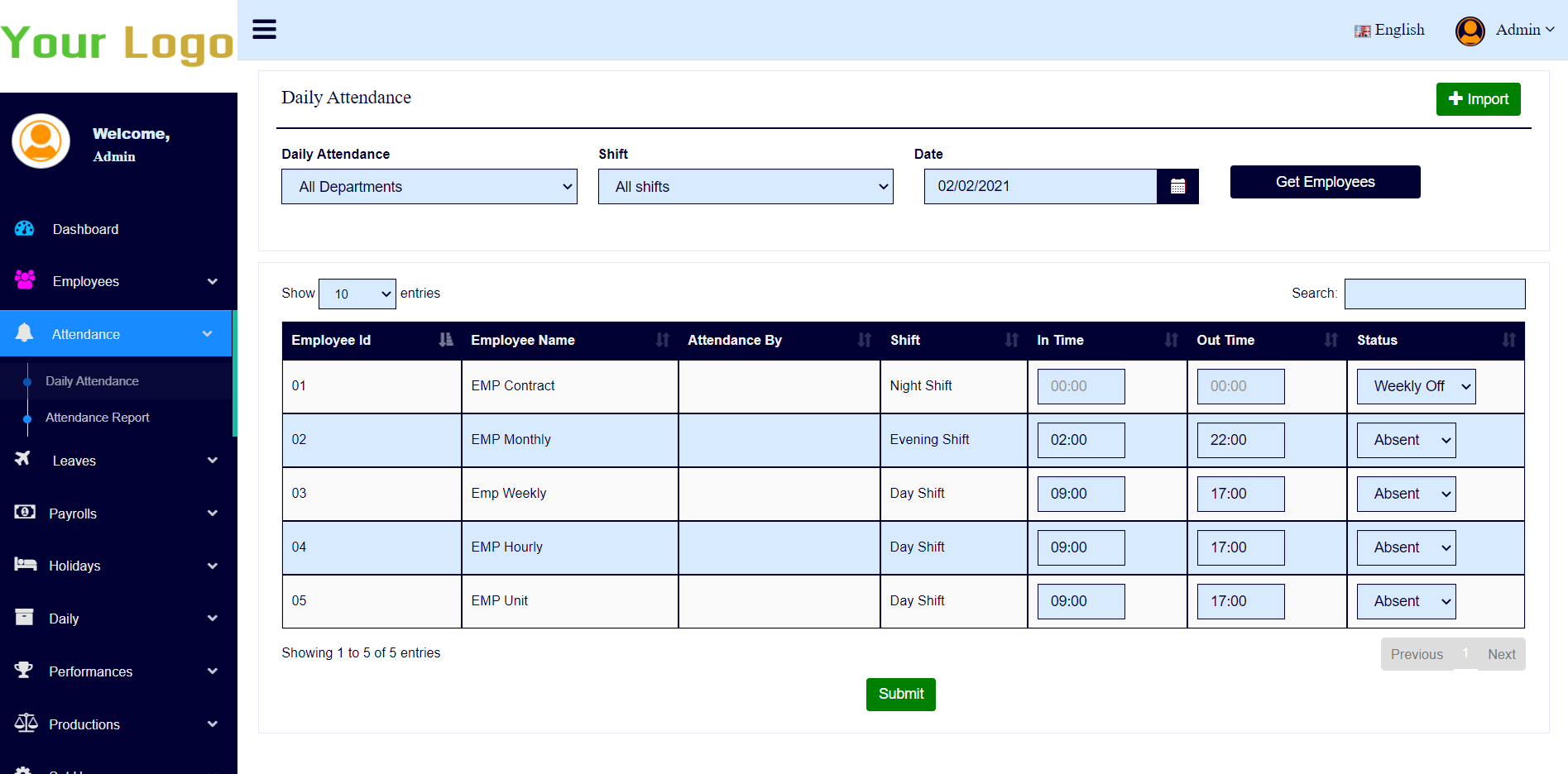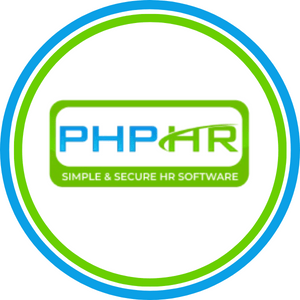Biometric Attendance System In Company

In the current job market, any edge you can get in hiring and retention is well worth it. To that end, employers are looking for every little bit of help they can get to keep track of their employees and ensure they’re coming to work. Employee timekeeping has become a critical part of any HR department and company as a whole. With so many people relying on check stubs and hand-written time logs, there’s an inherent risk in trusting your employees to record their own hours accurately. A biometric attendance system alleviates some of those concerns by verifying employee presence with biometrics, specifically, the technology uses fingerprints or other unique features from the hand like veins or tendons. Let’s take a deeper look at what biometric attendance systems are, who would use them, and how they might benefit your business.
Biometric Attendance System

What is a Biometric Attendance System?
A biometric attendance system tracks employee attendance with some sort of biometric verification. In other words, it uses your unique physical characteristics as a means of ensuring you’ve come to work, and if you didn’t, it could detect that too. Fingerprint scanners are the most common type of biometric device used for these systems, but some use veins, hand geometry, retinal scans, or even voice identification. Most of these systems are integrated into larger HR software or timekeeping systems. You’ll be able to use your fingerprint to log in and out of work, enter your hours, and maybe even open secured areas of your office. The system will keep track of every time you log in and out, as well as how many hours you work. This makes it easy to audit your employees’ hours and keep track of them all.
How Does a Biometric Attendance System Work?
Different devices have different ways of logging in and out, but the general idea is that you’ll scan your finger or hand to gain access to a secured area. Once you’ve finished for the day, you’ll scan your hand again to log out. If you don’t log out, the system can alert HR or security that someone is still in the office after hours. Some systems will even keep track of how many times you try to log in or out and send an alert if it seems like someone is trying to spoof the system. Biometric devices also keep track of your hours. Often, you’ll be able to log in and out with just a tap of your finger. Some systems allow you to use facial recognition, retinal scanning, or even hand geometry to log in and out.
Why Use a Biometric Attendance System?
There are a few reasons to consider investing in a biometric attendance system. First, these devices make it easy to keep track of hours. You can just tap a button to log in and out, and the system will keep track of everything automatically. It will even send you a notification if you forget to log out. These systems also make it easy to audit employee hours. You can search for specific employees or review hours for a day, week, or month. It’s easy to catch mistakes like incorrect or missing hours, or to see where you need to make adjustments. Finally, a biometric attendance system helps you ensure employees are actually at work. This can be especially helpful for employees who work alone, or in dangerous areas where you want to make sure employees are safe.


Benefits of Using a Biometric Attendance System
Biometric attendance systems provide a number of benefits for companies, employees, and clients. For starters, the system is fast and efficient, which means employees can get to work on time and managers can get a full days worth of work done in a timely manner. The system also makes it easy and convenient for employees to clock in. They simply have to walk through the sensor area, which is often near the entrance to the building, and the device will automatically clock them in. The system can also be programed to push alerts to managers when certain employees are not clocking in as scheduled, like if someone calls out sick or is running late. These systems can also be used to identify employees that are trying to access sensitive areas like the HR department or payroll office. This feature is helpful for companies that want to increase security and prevent fraud. Biometric systems can also be integrated with other software or computer systems to make it easier for employees to manage their time and attendance data.
Types of devices
The main types of biometric devices are fingerprint scanners, facial recognition, hand geometry, retinal scanners, and voice identification. There are a few differences between them, but they all work the same way. You’ll log in and out with your unique physical trait, and the system will keep track of your hours.
Fingerprint scanners
Fingerprint scanners are probably the most common type of biometric device. You might see these in places like the airport, or in certain offices and buildings. They’re often built into computer systems and laptops. They might also be attached to a larger device like a time clock. You’ll just place your finger on the scanner and it will log you in or out.
Facial recognition
Facial recognition is a newer type of device that is becoming increasingly popular. With facial recognition, you’ll train your system to recognize your face. Then, you’ll hold a device up to your face to log in or out. This is more discreet than a fingerprint scanner, which could make employees with privacy concerns more comfortable.


Hand geometry
Hand geometry is a useful option for employees who may have a hard time using fingerprint scanners. Hand geometry uses the veins and lines in your hand to identify you. This is usually less sensitive than a fingerprint scanner, which makes it a good option for people who are concerned about privacy.
Retinal scanners
Retinal scanners are some of the most accurate devices. Retinal scanning can be helpful for people who work in places like hospitals or labs, where there’s a risk of cross-contamination from using other biometric devices. Retinal scanners are more expensive, though, and they aren’t as widely available as the other devices.
A biometric attendance system is a great investment for any organization. It can help you accurately log employee hours, keep track of who is coming and going, and even prevent fraud. These devices are more discreet than old-fashioned time cards and are a great option for employees who are privacy minded. Biometric devices can also help you comply with regulations like the Fair Labor Standards Act and keep track of employees working alone. They are easy to use and can be integrated into larger HR software systems.




